16 results
Common Core 7.SP.C.6 laboratories
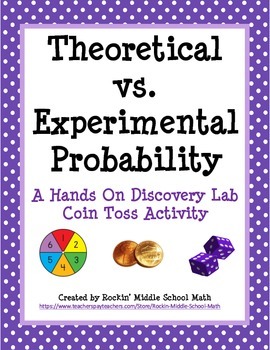
Theoretical vs Experimental Probability Lab (includes making predictions)
This is a fun, student-centered activity in which students working with a partner will conduct an experimental lab tossing 2 coins. After completing the lab, they will draw conclusions based upon the results of the activity concerning the difference between theoretical and experimental probability. Then they use experimental probability to make predictions. I have included the lab activity, a follow-up worksheet which can be used to engage student discussion after the lab, and a worksheet for
Subjects:
Grades:
6th - 9th
Types:
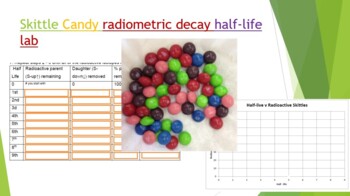
Skittle Radiometric Decay Half-life Lab
Did you know you can use Skittles candy to demonstrate absolute dating and radiometric decay! Buy a 1-4 lb bag at your local bulk warehouse store for savings. This lab is a great way to show how isotopes decay by shaking a plate full of random skittles. Students use Skittles to observe "Isotopes" decay over each half life. At the end of the lab (and only IF they have done all their work) they can enjoy their "daughter products". Skittles were used because they are durable, hypoallergenic, and th
Subjects:
Grades:
8th - 12th, Higher Education, Adult Education
Types:
NGSS:
HS-PS1-8
, HS-PS1-1
, HS-PS1-4
, HS-PS1-6
, MS-PS1-4
...
Also included in: Hands-on Science Semester Labs Bundle

Skittles Probability
Students use skittles to discover or review the probability of simple, compound, independent, and dependent events. Reflection questions are included to help students think critically about the lab they are working through. Students can work through the lab individually or as a group. The activity requires a minimum knowledge of simple probability. Let me know if there is anything I can add to make it a better resources. Every grade level I have taught, 7 - 10 have loved this activity. Skittles
Subjects:
Grades:
5th - 11th
Types:

Basketball Statistics Project
Description: Engage your middle school students in the exciting world of basketball while reinforcing math and data analysis skills with this interactive Basketball Stats Project! This comprehensive resource is designed to captivate students' interest in both sports and mathematics, making learning both fun and meaningful.Take your students to the gym or outdoor playground hoop and they'll collect data on "How many baskets can ___ graders make in 60 seconds?" (the template is set to sixth grade
Subjects:
Grades:
5th - 8th
Types:
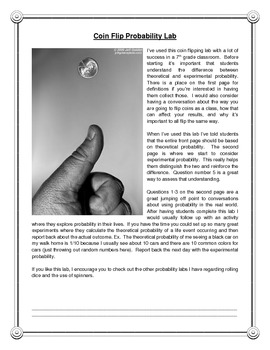
Probability Math Lab - Coin Flipping
This is a one day Math Lab to explore theoretical and experimental probability through flipping coins. Students determine the theoretical probability of a few scenarios and then experiment to see what happens. It comes with a couple pointers on how to preface the lesson and where to go when you're finished. Aligned to the Common Core Standards for Math.
Subjects:
Grades:
6th - 8th
Types:
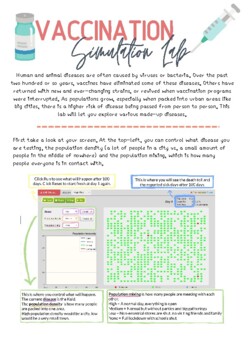
COVID-19 Simulation Lab
Students go to the following website and follow the guide to answer the questions. They look specifically at why social distancing and staying at home works, how population density affects the spread of a virus and how vaccinations can slow the spread. They will answer questions about their thoughts on vaccinations and if they should be required to have one. Website: https://www.learner.org/wp-content/interactive/envsci/disease/disease.html
Grades:
5th - 12th
Types:
NGSS:
HS-LS4-6
, HS-LS4-3
, MS-LS4-4
, MS-LS4-6

Math Lab Theoretical and Experimental Probability
Welcome to Kindly Pass the Math! * The following Math Lab is offered as an experimental approach to the relationship between Theoretical and Experimental Probability.A brief explanation defining both Theoretical Probability and Experimental Probability.* Students are introduced to the common terms used in probability calculations: Trial, Outcome, Event.* Students draw chips or marbles from a container and record their results on the Data Recording Sheets provided in the lab. * The lab pro
Subjects:
Grades:
7th - 10th, Adult Education
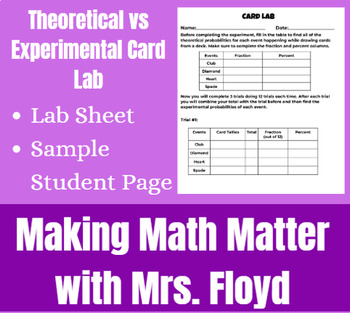
Theoretical vs Experimental Card Lab
This lab allows students to see theoretical probability and experimental probability by having them work with cards. This can be done solo or with a partner. If you don't have enough decks for each person/group you can split up decks making sure there is an even amount of each suit for each set. Or you can use those or you can go to Random.org and use their free one.Lab Sheet for students to write onSample Student copy as an example of how it would be filled in.
Subjects:
Grades:
6th - 10th
Types:
Also included in: Theoretical vs Experimental Labs Bundle
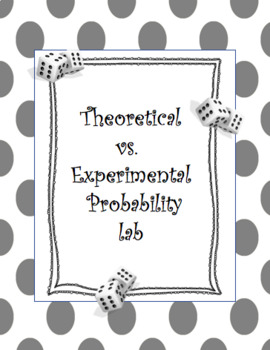
Theoretical probability versus Experimental probability Lab
This lab covers three objectives1) Finding the theoretical probability of an event2) Using theoretical probability to predict the expected outcome3) Comparing theoretical and experimental probabilityThis lab is engaging and challenging. Great way to learn mathematics.
Subjects:
Grades:
6th - 8th
Types:
CCSS:
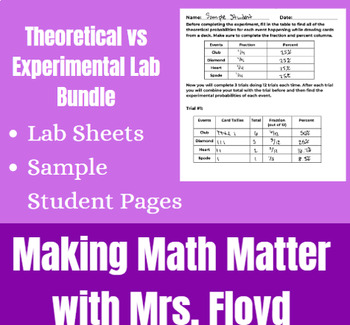
Theoretical vs Experimental Labs Bundle
These labs allows students to see theoretical probability and experimental probability by having them work with a spinners, number cubes, and playing cards. This can be done solo or with a partner. Each lab has a digital website linked in the description if spinners, cubes, or cards are not available for students.Lab Sheets for students to write onSample Student copies as an example of how it would be filled in.
Subjects:
Grades:
6th - 10th
Types:
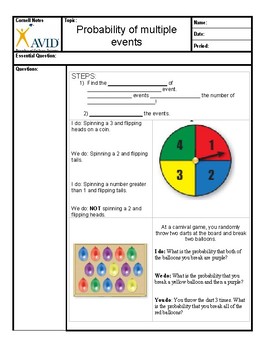
Bean Boozled Probability lab and Cornell Notes
This product is a lesson in probability using Bean Boozled. Buy the beans and let students calculate the probability of getting a yucky flavor! The Powerpoint presentation is to accompany is below.Bean Boozled Powerpoint PresentationBean Boozled Bundle
Subjects:
Grades:
5th - 8th
Also included in: Bean Boozled Probability Bundle
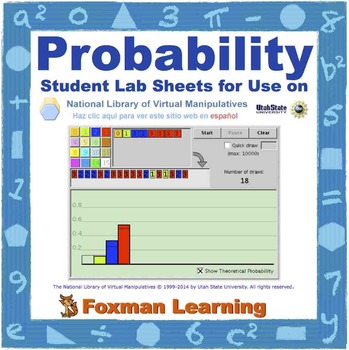
Probability -- Virtual Manipulatives Lab for Middle School Math CCSS Common Core
This lab guides students through five of the probability virtual manipulatives (applets) from the nlvm website: Coin Tossing, Box Model, Spinners, Stick or Switch, and Hamlet Happens. These virtual manipulatives are a great way for students to explore theoretical and experimental probability by very quickly simulating flipping a coin 100 times, spinning a spinner 500 times, or randomly drawing letters from the phrase “To Be or Not to Be” until their chosen word is selected by chance. My students
Subjects:
Grades:
6th - 8th
Types:
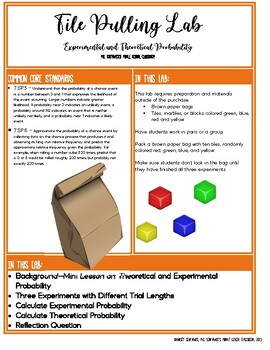
Theoretical and Experimental Probability Investigation--Tile Pulling Lab
This lab requires preparation and materials outside of the purchase:· Brown paper bags· Tiles, marbles, or blocks colored green, blue, red and yellowInquiry based task about experimental and theoretical probability. Students conduct different experiments to see if they can use experimental probability to predict theoretical probability. This includes follow-up questions.Main learning:-How does theoretical and experimental probability compare?-How do we compute theoretical and experimental probab
Subjects:
Grades:
7th
Types:

Theoretical vs Experimental Number Cube Lab
This lab allows students to see theoretical probability and experimental probability by having them work with a number cube. This can be done solo or with a partner. If you have cubes you can use those or you can go to Random.org and use their free one.Lab Sheet for students to write onSample Student copy as an example of how it would be filled in.
Subjects:
Grades:
6th - 10th
Types:
Also included in: Theoretical vs Experimental Labs Bundle
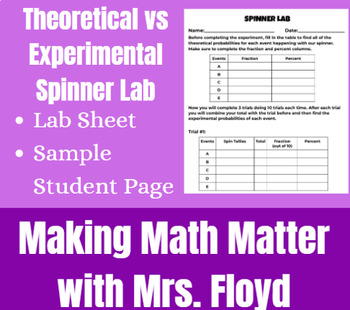
Theoretical vs Experimental Spinner Lab
This lab allows students to see theoretical probability and experimental probability by having them work with a spinner. This can be done solo or with a partner. If you have spinners you can use those or you can go to Super Teacher Tools and use their free one.Lab Sheet for students to write onSample Student copy as an example of how it would be filled in.
Subjects:
Grades:
6th - 10th
Types:
Also included in: Theoretical vs Experimental Labs Bundle
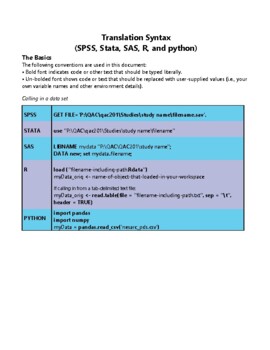
STATA software Secondary Data Analysis
This handout is intended for those interested in teaching/learning basic introductory statistics concepts to analyze real data. Students will learn how to tell a story using secondary data analysis. The handout is for STATA software and the US Longitudinal Study of Adolescent Health data set. For handouts on setting up an account, the data set code book and raw data file, a PowerPoint to accompany the handout, or questions please email kristin.flaming@gmail.com or ldierker@wesleyan.edu.This
Grades:
6th - 12th, Higher Education, Adult Education
Types:
Showing 1-16 of 16 results

